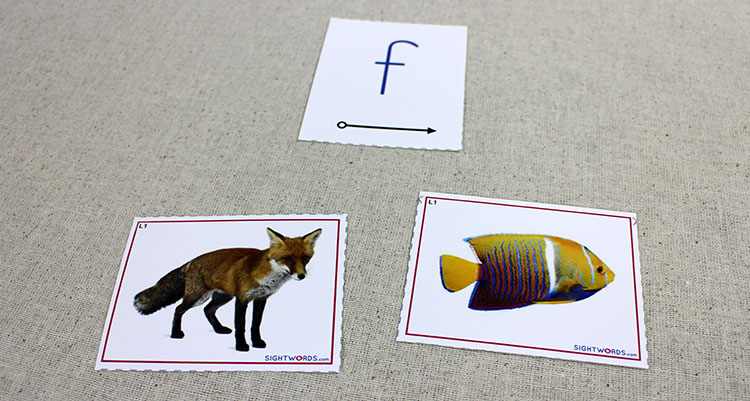L1: Mat Match
1. Overview
Compare two sounds (phonemes) in a pair of words, and practice matching the sounds to their alphabet letters. Your child will search for matches in the beginning sounds, ending sounds, and middle sounds of two words. This activity is similar to Snatch a Match, but also incorporates the word work mat from Sneak Preview of Reading to reinforce the connection between the letters and their sounds in words.
L1: Mat Match
2. Materials & Preparation
Print out the picture cards and the word work mat, preferably on sturdy card-stock paper. Cut apart the picture cards. For the word work mat, trim off the white edges and tape the pages together. The word index is for the adult’s reference only. ↑ Top3. Activity
Warm-Up: Put the word work mat directly in front of your child. Before starting the game, point randomly at different letters and digraphs and review them, flashcard style, to be sure he remembers the letters and their sounds. Have him say both the names and the sounds of the vowels.Video: How to play Mat Match
Using the word index, go through the picture cards with your child to be sure he is using the correct word for each picture (e.g., cab instead of taxi). Then shuffle the picture cards and divide them into two face-down stacks. In this activity we will not be using the three-square grid at the bottom of the word work mat, so you can put the picture card stacks on that space.
Introduce the game to your child by explaining that it is similar to Snatch a Match.
Adult: I’m going to show you a new game that is a little like Snatch a Match. You turn over the top picture in each pile, and I’ll name the pictures. Then you tell me if the sounds I ask you for — the first, the last, or the middle sounds — in the two pictures match. Next, I want you to look at the mat and find the letter for each sound I asked you to try to match in the two words. If the two sounds match, you’ll touch that letter on the mat twice. If the sounds don’t match, you’ll touch two different letters on the mat. That’s a lot to remember, so we’ll practice together.Now lead your child through a round of the game. For each round, you will randomly select which sound (beginning, ending, or middle) the child should identify to look for a match. Be sure to say the words very clearly.
Adult: Let’s try one. The two cards you turned over are rip and rug. Listen again: rip, rug. Are the last sounds in rip and rug the same? Say rip and rug and see if their last sounds match. Child: Rip…rug. No. Adult: Okay. Find and touch the sound picture — the letter — for the last sound you hear in rip. Child: Rip [touches p on mat]. Adult: Now find and touch the sound picture — the letter — for the last sound you hear in rug. Child: Rug [touches g on mat]. Adult: Right. Since those sounds don’t match, put the picture cards in a used pile, next to me.Non-matching cards can be put in a “used” pile off to the side. When you get to the bottom of the face-down stacks, shuffle the used cards and divide them into two new face-down stacks. If the designated sounds in the two pictures do match, the child can put the two picture cards in a pile next to him. If it helps to motivate him, you can count each matched picture card as being worth one point. The six cards with our SightWords.com eye logo are wild cards. If your child turns over a picture card and a wild card, he can count them as a matched pair (after identifying the designated sound for the picture card). Or you can leave the wild cards out if you like. Go through at least 15 pairs of picture cards in a session. Be sure to mix it up, randomly asking your child to match the beginning, ending, and middle sounds. Play this game often over a period of at least two weeks. Revisit this game until he is confident in determining if the two target sounds match and can quickly identify the corresponding letters on the mat. ↑ Top
4. Confidence Builder
Have the child look only for matches in the beginning sounds. Once he is confident in that, switch to ending sound matches, then digraph matches (e.g., chin and chop), and eventually middle sound matches. The final step is to vary which sounds (beginning, ending, or middle) he must match. ↑ Top5. Small Groups (2-5 children)
Lesson Objective: Using picture cards and alphabet letter cards, children will determine if a spoken specified sound in the names of two pictures match, and then match the specified sound in each word to its corresponding lower-case letter cards. GELDS (Georgia Early Learning & Development Standards): CLL6.4f (closest standard) Georgia Standards of Excellence: ELAGSEKRF2.e Most Kindergarteners will find this skill very challenging. Common Core State Standards: CCSS.ELA-LITERACY.RF.K.2.E Additional Materials:- optional: pocket chart for displaying picture cards or letter sound cards
Leave a Reply
